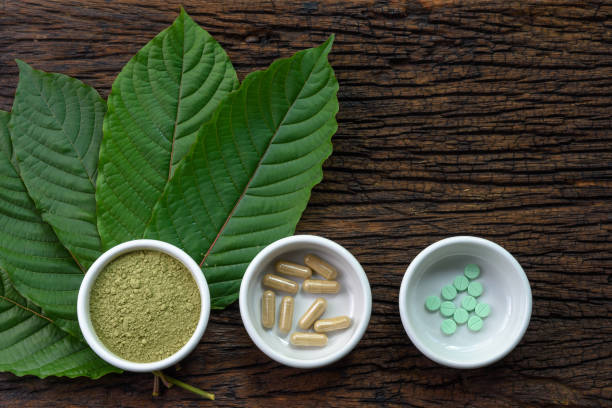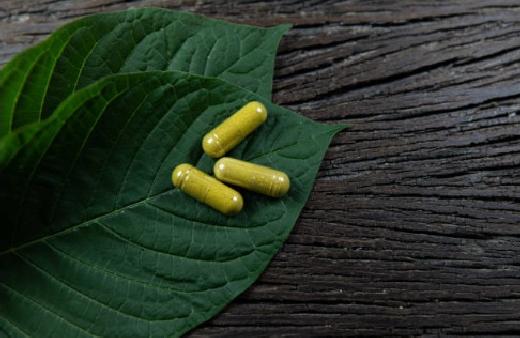
*Kratom is a tree, dude! The leaves used as a remedy for leisure and as medicines. As a calming medication, the leaves chewed or drank as a tea to boost mood as a euphoriant and enhance physical endurance. As a medication, Kratom use to treat anxiety, cough, depression, diabetes, diarrhea, high blood pressure, pain, improve sexual function, and reduce symptoms of opiate withdrawal.
What Common Names of Kratom:
Mambog, Nauclea, Thangs, Thom, Mitragyna speciosa, Kathom, Katom, Katom, Ketum, Thom, Katom, Katom, Karthoam and Katom are some common names of kratom.
Was the Kratom Used As A Medicine?
In recent years, some people have used Kratom as a natural alternative to medical medication to relieve withdrawal symptoms and cravings induced by opioid dependency or other dangerous substances such as alcohol. Kratom is an autochthonous tropical tree with a psychotropic leafy influence in South East Asia. Kratom is not legally illegal and was easy to order on the market. Many people take Kratom as a tablet or a capsule. Most people chew the crater leaves or cook the dried or powdered leaves as a tea. Also, the leaves are roasted or eaten in milk. Two compounds in the Kratom leaves, mitragynine, and hydroxyl mitragynine, interact with the opioid receptors of the brain, causing sedation, relaxation, and reduced pain.
What Are Results Of Use Of Kratom?
Kratom has the potential to have a positive effect on the body. Kratom produces almost as many alkaloids like morphine and hallucinogenic mushrooms. Alkaloids have a very strong physical effect on humans. Although some of these results may be positive, others may be cause for concern. This is all the more justification why further studies of this drug are needed. Substantial risks of adverse effects are known and safety has not been specified. We have Kratom for sale. So visit our site for further details.

Why Western People Use Kratom?
Two compounds in the Kratom leaves, mitragynine, hydroxyl mitragynine, interact with the opioid receptors in the brain, causing sedation, relaxation, and decreased pain when administered at high doses. Higher doses cause alertness instead of sedation. Many people in Western countries are using Kratom to try to alleviate pain or to alleviate the effects of opioid withdrawal.
You may have heard of Kratom Mitragyna speciosa, an herbal medicine widely used in Southeast Asia for strength and to help alleviate pain and injury. Derived from the evergreen tree form, the Kratom contains alkali compounds called mitragynine and 7-hydroxy mitragynine. Throughout history, humans have used plant-derived products frequently referred to as herbal or botanical remedies to cure illnesses, to cope with the difficulties of life, and to enter into altered states of consciousness. With the introduction of modern pharmaceuticals and medical therapies, many people have been using herbal remedies as alternatives to or in combination with traditional medical care. Many years ago, Barnes ET al1 found that more than 30% of US patients had or used some kind of herbal remedies. They also noticed that agents were usually used for ‘musculoskeletal or other chronic pain conditions.’
Learn About Value of Kratom:
While the value of most of these herbal remedies has not yet been proven in controlled clinical trials, it is clear that these products are commonly used. Whether used alone or in conjunction with licensed medicines, herbal remedies have the potential to cause adverse reactions, interfere with pharmaceutical medications, and complicate the diagnosis and treatment of disease. At the same time, however, herbal remedies can have major beneficial effects. Some evidence2 indicates that these herbal products may have therapeutic actions that are similar to those of conventional pharmaceuticals.
Research Starts on Herbal Remedies:
Also, research on the effects of herbal supplements and their active ingredients could provide insights that could lead to the development of new and more effective therapeutic agents. Given the extensive use of herbal remedies, there is a need for doctors and other health practitioners to have some knowledge of their relevant issues. Awareness is particularly important for osteopathic doctors as the principles of osteopathic medicine concentrate on a holistic approach to patient care, musculoskeletal health, and self-healing.
Therapeutic Potential of Kratom:
Osteopathic physicians should be familiar with traditional herbal remedies which may be used by their patients. One herbal treatment that has received increased media attention in recent years is Kratom. This article addresses existing patterns of use, basic pharmacology, legal status, and the therapeutic potential of Kratom.
Kratom has been widely used in Southeast Asia for hundreds of years. In Thailand, the use of Kratom generally involves the ingestion of raw leaves of the plant or the ingestion of teas distilled or steeped from the leaves. Kratom leaves are used for their complex, dosage-dependent pharmacological effects.
Low to Moderate Doses:
1-5 g of leaves is reported to have mild calming effects that enable workers to stave off fatigue. Medium to high doses 5-15 g of leaves is reported to have opioid-like effects. At these doses, Kratom was used for the treatment of pain, vomiting, and opiate withdrawal symptoms, as well as for its euphoric properties.
High Doses:
Kratom has been widely used in Southeast Asia for hundreds of years. In Thailand, the use of Kratom typically includes the ingestion of raw leaves of the plant or the preparation of teas that are brewed or steeped from the leaves. Kratom leaves are used for their dynamic, dosage-dependent pharmacological effects. Low to moderate doses 1-5 g of leaves is recorded to have mild soothing effects that allow workers to stave off fatigue. Moderate to high doses of 5-15 g opioid-like effects have been documented. Among such doses, Kratom was used for the treatment of symptoms of pain, vomiting, and opiate withdrawal, as well as for its euphoric effects. Very small doses of 14 g of Kratom tend to be very sedative
Summary:
Evidence suggests that Kratom is widely used for medicinal and non-medical purposes. Recent studies have shown that Kratom contains a variety of active compounds that have important pharmacological effects on opioid and other receptors. Kratom and Kratom-derived drugs can potentially be used to treat pain, opioid withdrawal symptoms, and other health problems. At the same time, major questions remain about possible toxic effects and the potential for Kratom abuse and addiction. So you are interested in purchasing kratom. Buy Kratom by clicking the link.
We Publish News 24/7. Don’t Miss A Story. Click HERE to SUBSCRIBE to Our Newsletter Now!





